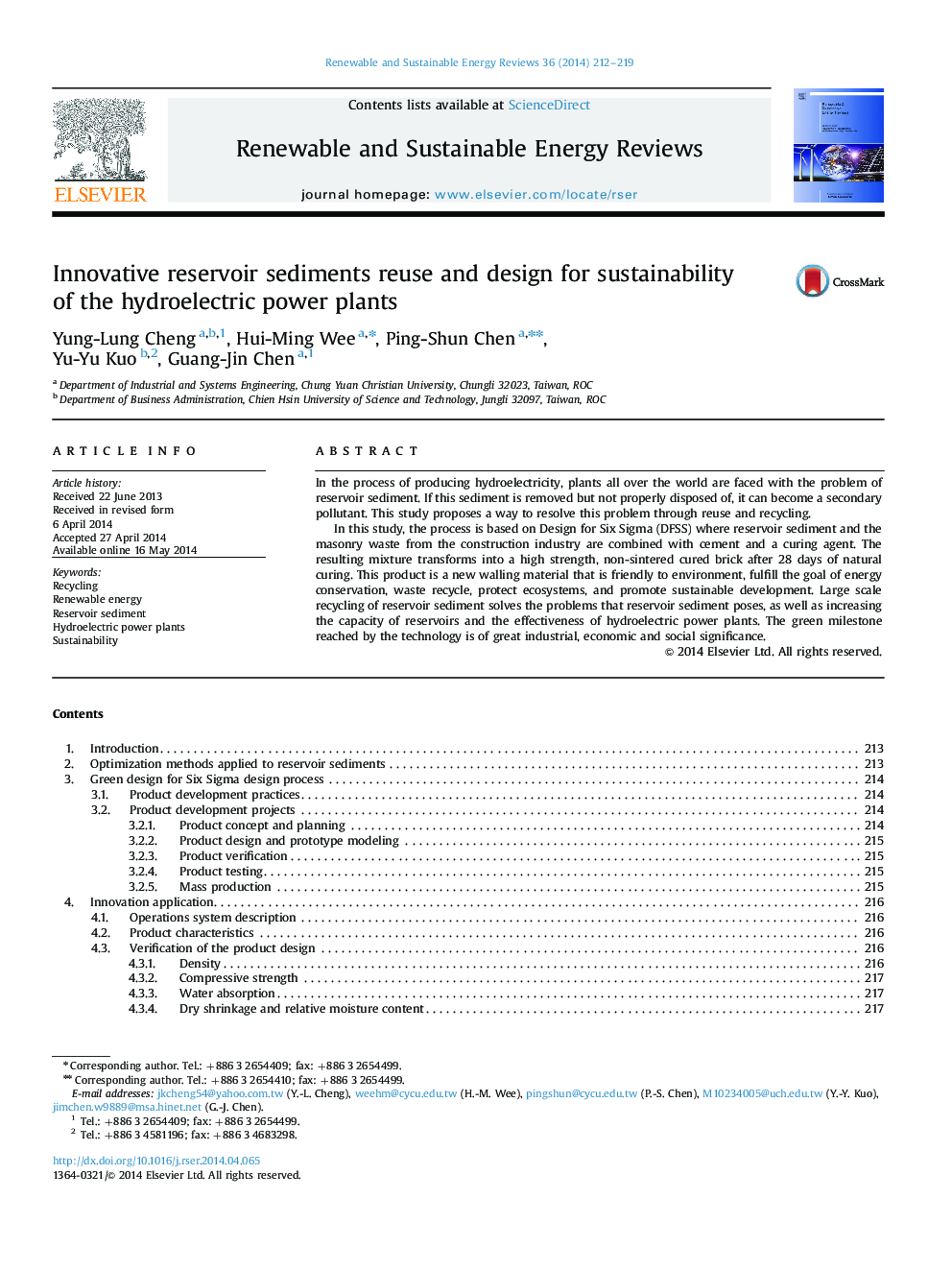| Article ID | Journal | Published Year | Pages | File Type |
|---|---|---|---|---|
| 1750340 | Renewable and Sustainable Energy Reviews | 2014 | 8 Pages |
In the process of producing hydroelectricity, plants all over the world are faced with the problem of reservoir sediment. If this sediment is removed but not properly disposed of, it can become a secondary pollutant. This study proposes a way to resolve this problem through reuse and recycling.In this study, the process is based on Design for Six Sigma (DFSS) where reservoir sediment and the masonry waste from the construction industry are combined with cement and a curing agent. The resulting mixture transforms into a high strength, non-sintered cured brick after 28 days of natural curing. This product is a new walling material that is friendly to environment, fulfill the goal of energy conservation, waste recycle, protect ecosystems, and promote sustainable development. Large scale recycling of reservoir sediment solves the problems that reservoir sediment poses, as well as increasing the capacity of reservoirs and the effectiveness of hydroelectric power plants. The green milestone reached by the technology is of great industrial, economic and social significance.
